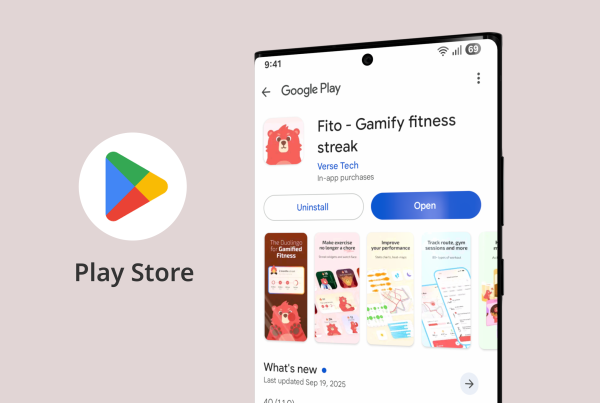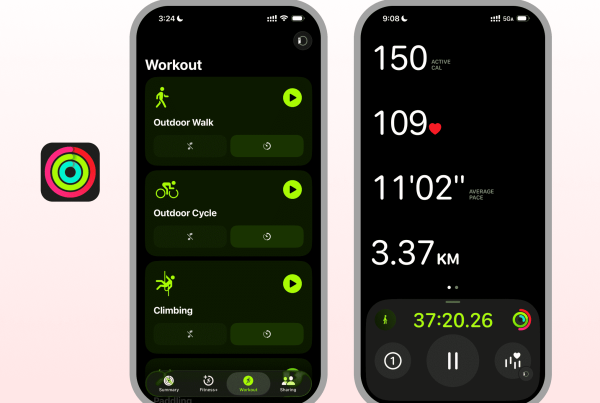L'app Fitness di Apple per iOS 26 ha ricevuto un notevole aggiornamento, con funzioni che riducono il divario tra un'esperienza solo telefonica e quella che si può ottenere con un Apple Watch o AirPods Pro 3. Per molti utenti occasionali si tratta di un'ottima notizia: ora è possibile registrare corse, passeggiate e pedalate con tracciamento GPS direttamente dall'iPhone.
Tuttavia, per chi si allena regolarmente o desidera strumenti di motivazione, analisi e condivisione più ricchi, la nuova app Fitness non è all'altezza. Di seguito mettiamo a confronto Apple Fitness e Fito su 6 dimensioni pratiche per mostrare dove Fito offre più valore a chi si allena seriamente.
1. Mappatura live e pausa automatica
Apple Fitness ora registra i dati del percorso, ma non mostra una mappa in tempo reale durante l'allenamento su iPhone: i dettagli del percorso vengono visualizzati solo al termine. Fito visualizza una mappa in tempo reale mentre ci si allena e supporta la pausa/ripresa automatica quando ci si ferma (semaforo, attesa o pausa). La mappatura in tempo reale e la pausa automatica migliorano la sicurezza, il ritmo e rendono l'allenamento a intervalli più facile da gestire al volo.
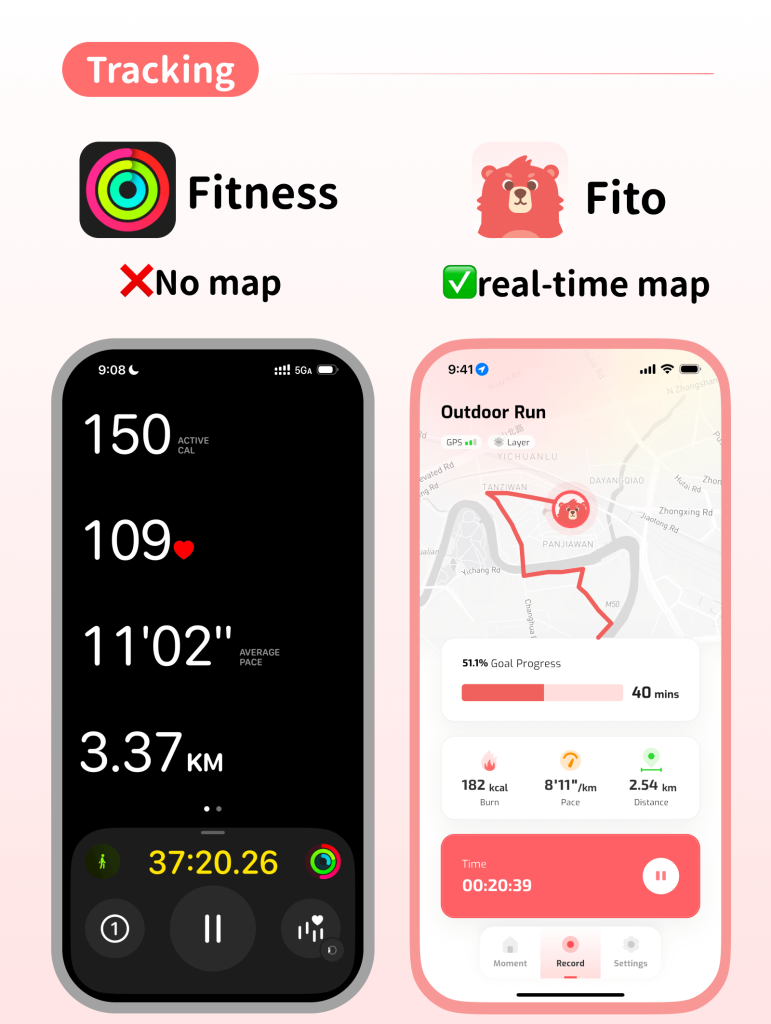
2. Attività sostenute
Senza un Apple Watch, Fito si limita a correre, camminare e pedalare. Fito supporta oltre 80 tipi di attività: dal ciclismo, all'escursionismo e al nuoto (dove i sensori del telefono lo consentono), allo yoga, all'allenamento della forza, al canottaggio e agli sport di nicchia. Più tipi di attività significano stime caloriche più accurate, metriche personalizzate e migliori registrazioni a lungo termine di ciò che effettivamente si fa.
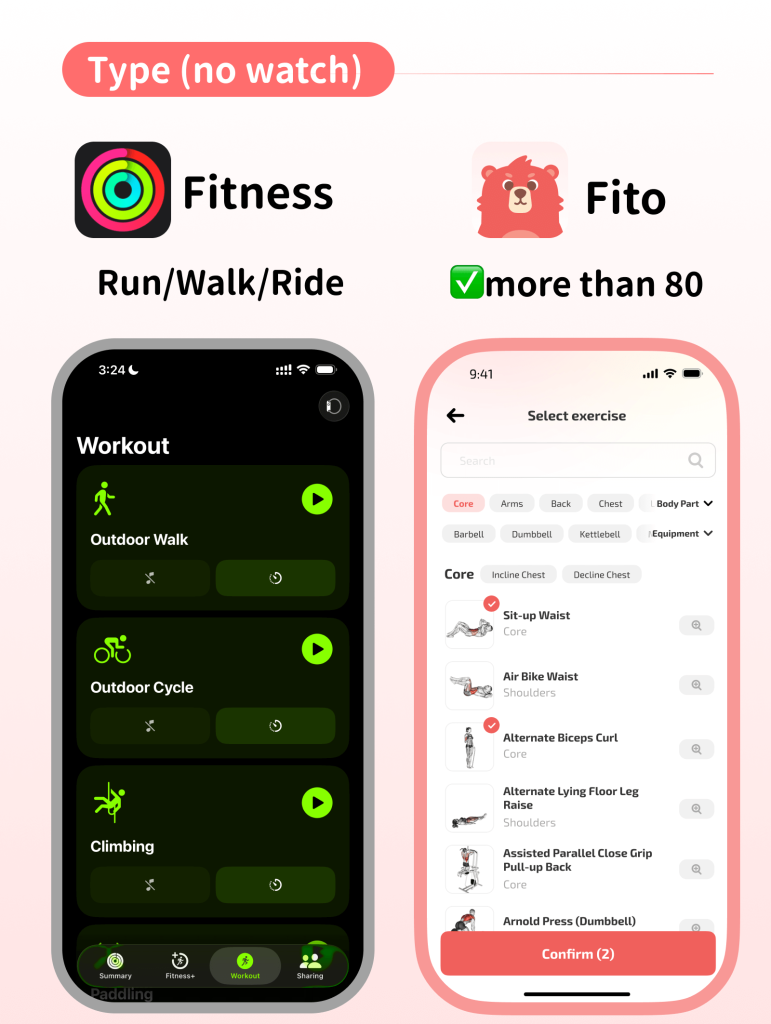
3. Motivazione e widget
Fitness di Apple si concentra su semplici metriche e anelli. Fito aggiunge caratteristiche motivazionali come le strisce e i sistemi di raggiungimento dei risultati che incoraggiano la costanza quotidiana, oltre ai widget personalizzabili della schermata iniziale per visualizzare i progressi a colpo d'occhio. Queste caratteristiche di coinvolgimento fanno sì che gli utenti ritornino e contribuiscono a creare abitudini a lungo termine, al di là della visualizzazione passiva dei dati.
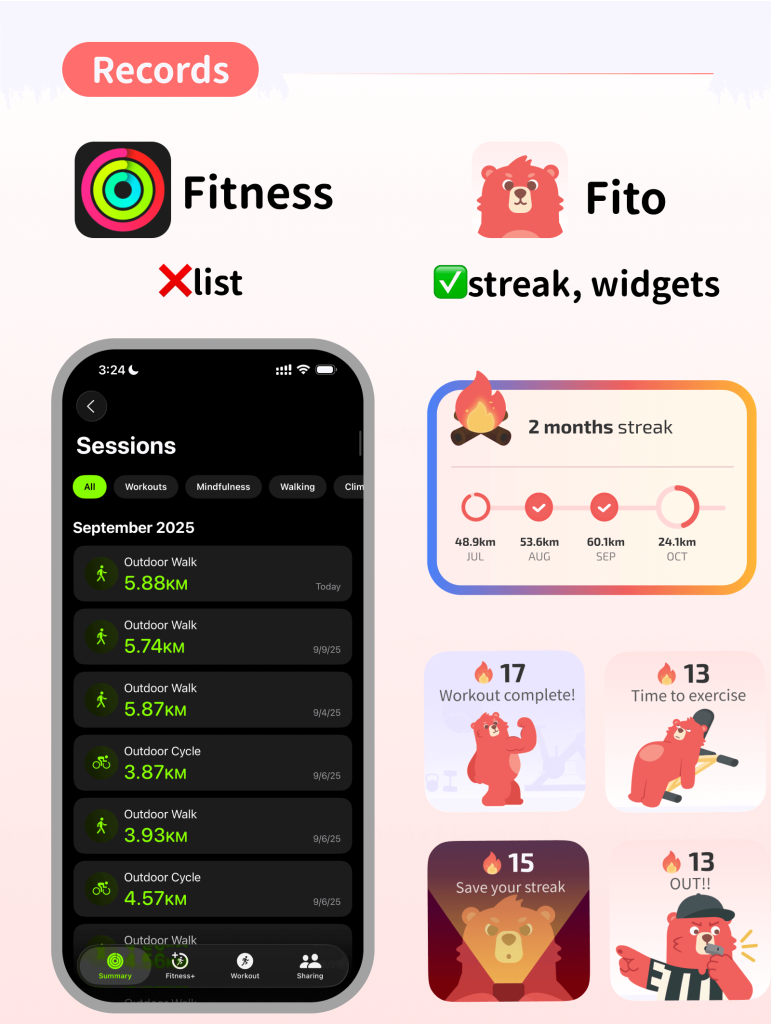
4. Analisi dei dati e approfondimenti
L'app Fitness aggiornata riassume gli allenamenti, ma mantiene le analisi relativamente semplici. Fito fornisce statistiche più approfondite: tendenze per settimane e mesi, suddivisione del ritmo e della cadenza, metriche adattate all'altitudine, indicatori del carico di allenamento e del recupero. Gli approfondimenti avanzati aiutano gli atleti a pianificare i progressi, a individuare gli apici e a prendere decisioni informate sull'allenamento.
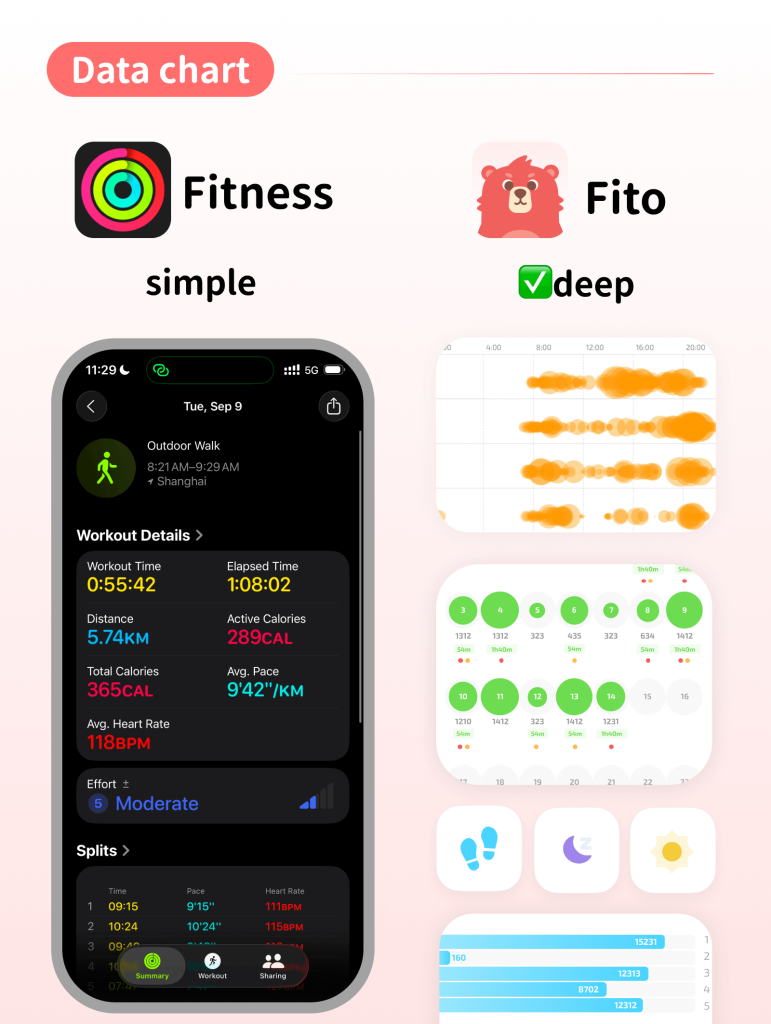
5. Resistenza alla registrazione offline e manuale
Se la batteria dell'iPhone si scarica, ci si dimentica di iniziare un allenamento o il GPS si guasta, Fitness di Apple può perdere la sessione e gli anelli o gli obiettivi giornalieri possono riflettere il divario. Fito consente l'inserimento manuale e il reinserimento delle attività, garantendo la continuità della cronologia degli allenamenti e delle strisce. La possibilità di correggere o aggiungere le sessioni mancate preserva la motivazione e l'accuratezza a lungo termine.
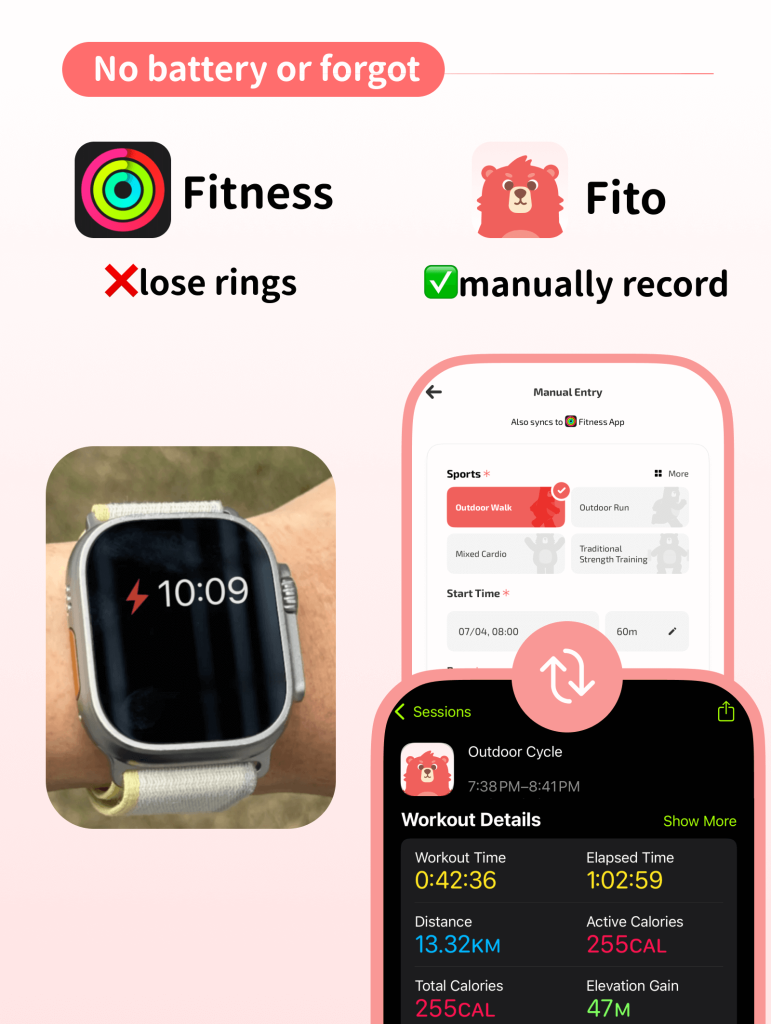
6. Condivisione e narrazione
Fitness offre una condivisione limitata - per lo più immagini statiche di metriche riassuntive. Fito amplia le opzioni sociali e di narrazione: foto condivisibili con sovrapposizione di statistiche, video animati del percorso in 3D e formati di esportazione configurabili per amici o allenatori. Una migliore condivisione trasforma gli allenamenti in storie, alimenta la motivazione sociale e consente un feedback più ricco da parte dei compagni di allenamento.
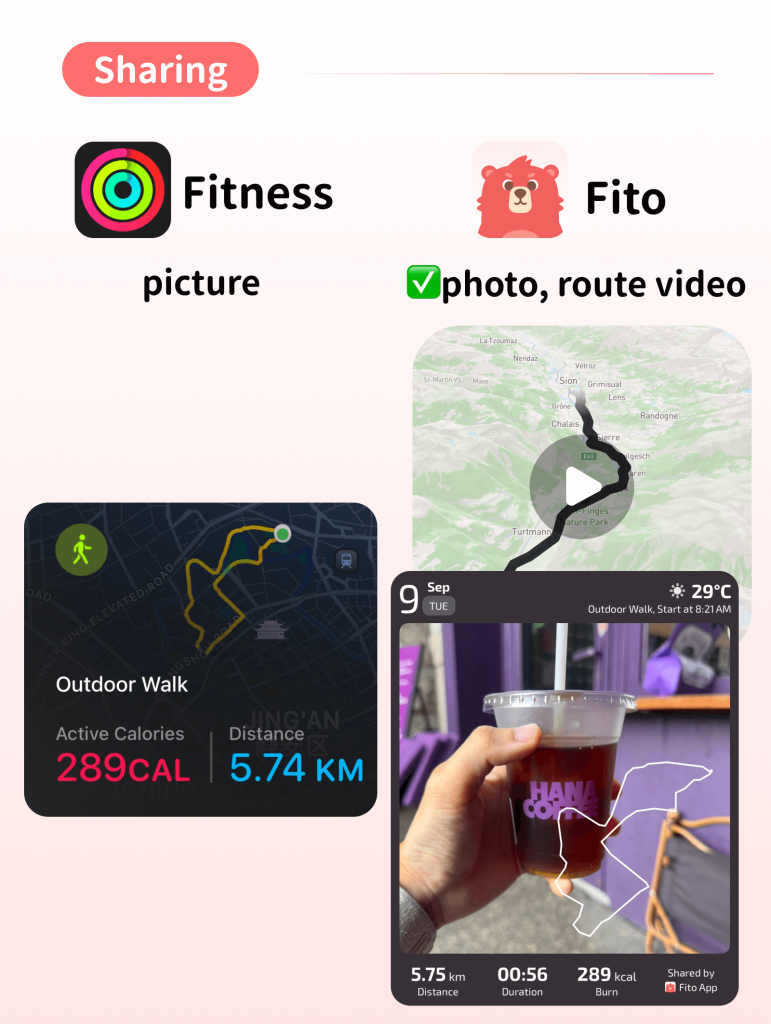
Conclusione
L'aggiornamento di iOS 26 Fitness è un passo importante: il tracciamento dei percorsi solo sul telefono è una comodità gradita che aiuta molti utenti. Tuttavia, se volete allenarvi, analizzare, motivarvi e condividere sui social, Fito offre un'esperienza più completa. Dalle mappe in tempo reale alla pausa automatica, passando per oltre 80 tipi di attività, analisi più approfondite, registrazione manuale, motivazione basata su strisce e ricche funzioni di condivisione, Fito colma le lacune lasciate dall'approccio più semplice di Apple. Per gli utenti occasionali, Apple Fitness è ora più capace di prima; per gli atleti impegnati e per gli utenti abituali, Fito rimane la scelta migliore.


